Ectomycorrhizae affect only 3 to 5% of terrestrial plant species, but they have considerable forest importance. The pH of the soil is one of the important factors in the choice of the mycorrhizal species best adapted to the site of plant ation.ROBIN Pépinières produces in his laboratory a range of mycorrhizae adapted to the different host species, the different types of conditions and soils.
The ectomycorrhizae that we grow:
Hebeloma crustuliniform
The ROBIN hebeloma crustuliniform strain, which we have selected in our laboratory, makes it possible to obtain a significant improvement of the results in plantation on calcareous grounds.
It supports quite well moist, somewhat clayey soils.The main controlled mycorrhizal plants HIGH PERFORMANCE®, Mycorrhizae with Hebeloma crustuliniform ROBIN that we propose are:
- Common beech (Fagus sylvatica)
- Austrian black pine (Pinus nigra austriaca)
- Green oak (Quercus ilex)
- Truffle oak (Quercus pubescens)
- Aleppo pine (Pinus halepensis)
- Atlas cedar (Cedrus atlantica)
- Parasol pine (Pinus pinea)
- Calabrian larch pine (Pinus laricio calabrica)
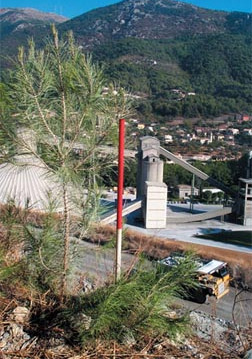
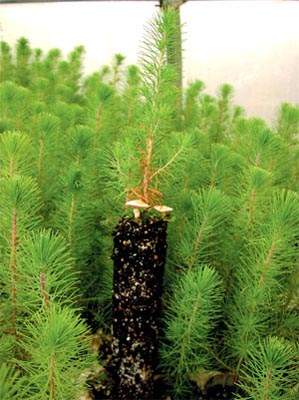
Read Article of the "Horticultural Link" of 19 October 2011
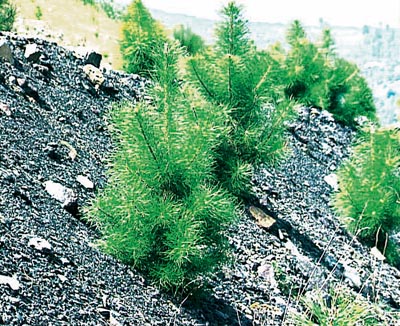
Laccaria bicolor
The mycorrhizal plants controlled with the strain of Laccaria bicolor ROBIN, selected in our laboratory allow to improve the results of the plantations realized in acidic or decarbonated grounds. Some of the available mycorrhizal host species controlled with LACCARIA bicolor ROBIN:
- Common beech (Fagus sylvatica)
- Common larch (Larix decidua)
- Red oak (Quercus borealis)
- Corsican pine laricio (Pinus laricio corsicana)
- Sessile oak (Quercus sessiliflora)
- Austrian black pine (Pinus nigra austriaca)
- Atlas cedar (Cedrus atlantica)
- Parasol pine (Pinus pinea)
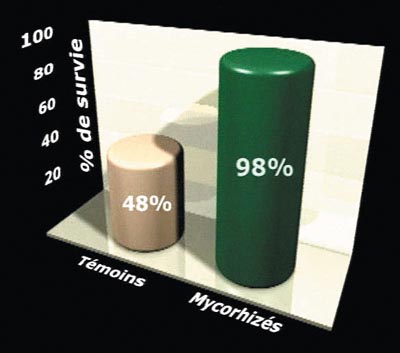
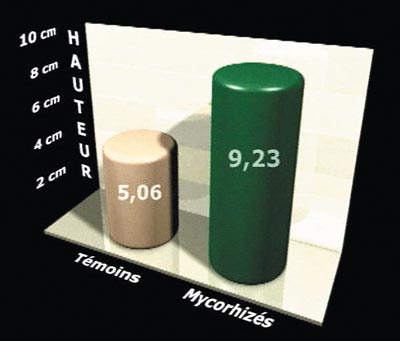
Suillus Collinitus
Improves the recovery and development of Pines in particular:
- On calcareous and marly soils
- Austrian black pine (Pinus nigra austriaca)
- Aleppo pine (Pinus halepensis)
- On decarbonated soils
- Parasol pine (Pinus pinea)
- Maritime pine (Pinus pinaster)
- Scots pine (Pinus sylvestris)
- Salzmann pine (Pinus laricio salzmann)
Pisolithus tinctorius
Improves the recovery and development of Pines in particular:
- On decarbonated soils
- Maritime pine (Pinus pinaster)
- Parasol pine (Pinus pinea)
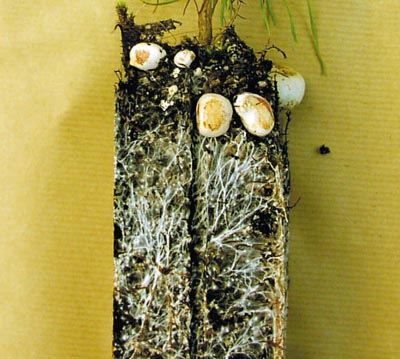
Rhizopogon rubescens
This mushroom is quite independent of soil types, but it mainly benefits:
- On sands of the coastal dunes
- Parasol pine (Pinus pinea)
- Maritime pine (Pinus pinaster)
Our customers testify:
Letter from: Mr. MEILLAND REY.SATMA company quarrying department.38081 L'ISLE D'ABEAU.
Subject: SATMA construction site quarrying department.
"The use of Controlled Mycorrhizal Plants is particularly interesting in revegetations of degraded sites such as quarries. "Quarrying must be conducted with seriousness to ensure quality production and allow for exemplary coordinated redevelopment." Our planting conditions, which are often difficult, have forced us to look for the best methods to ensure rapid recovery and development. Our choice was focused on controlled mycorrhizal plants. We have been implementing for many years either direct purchase or under a growing contract at the ROBIN Nurseries different species in order to reforest our exploited sites. "